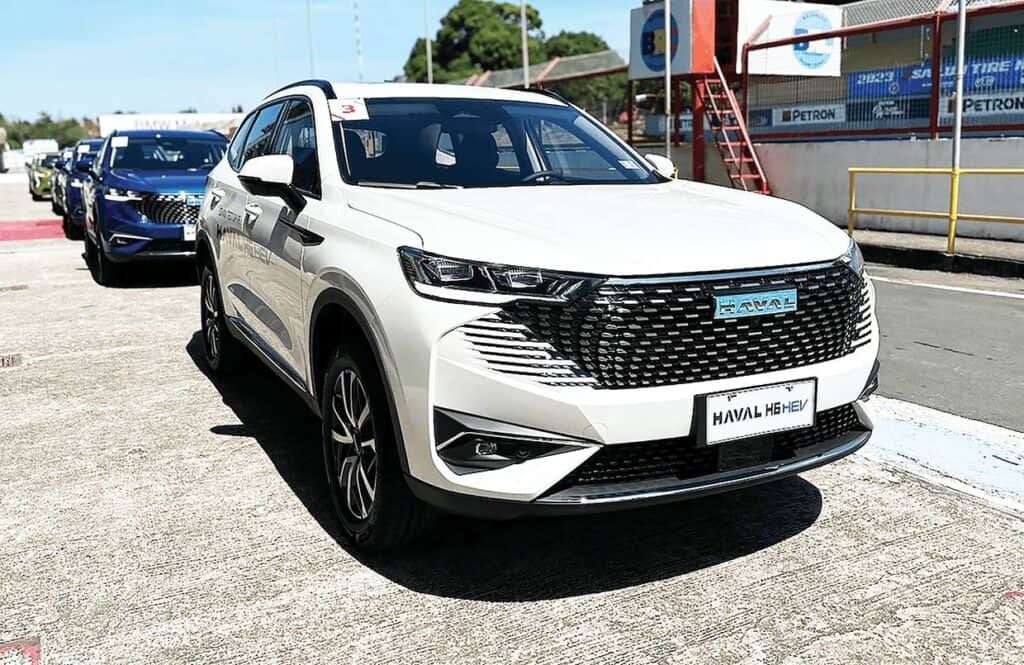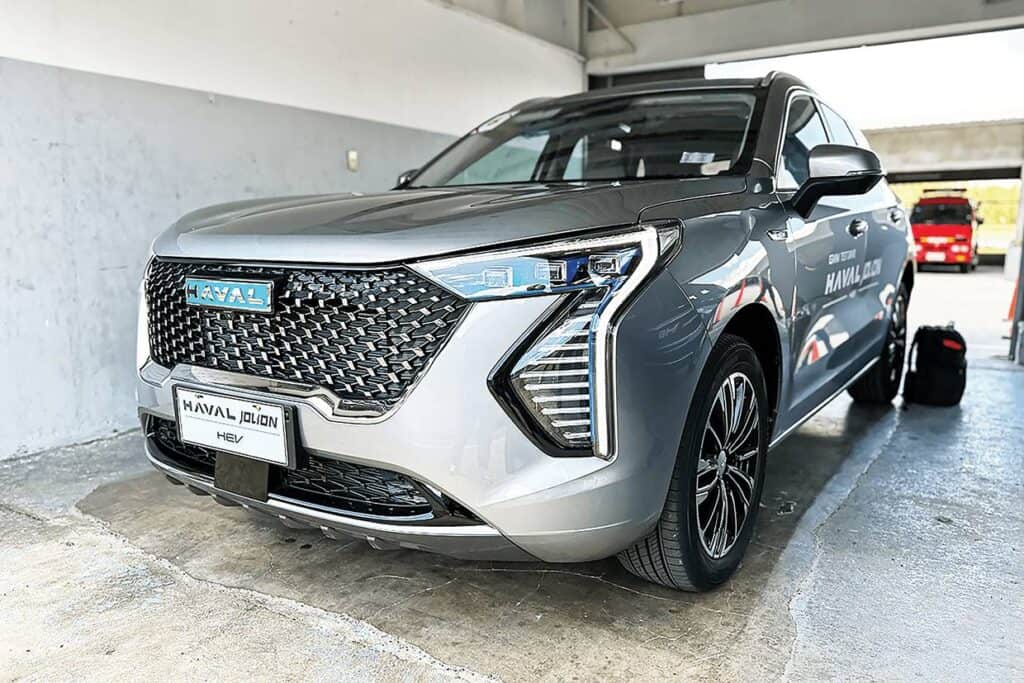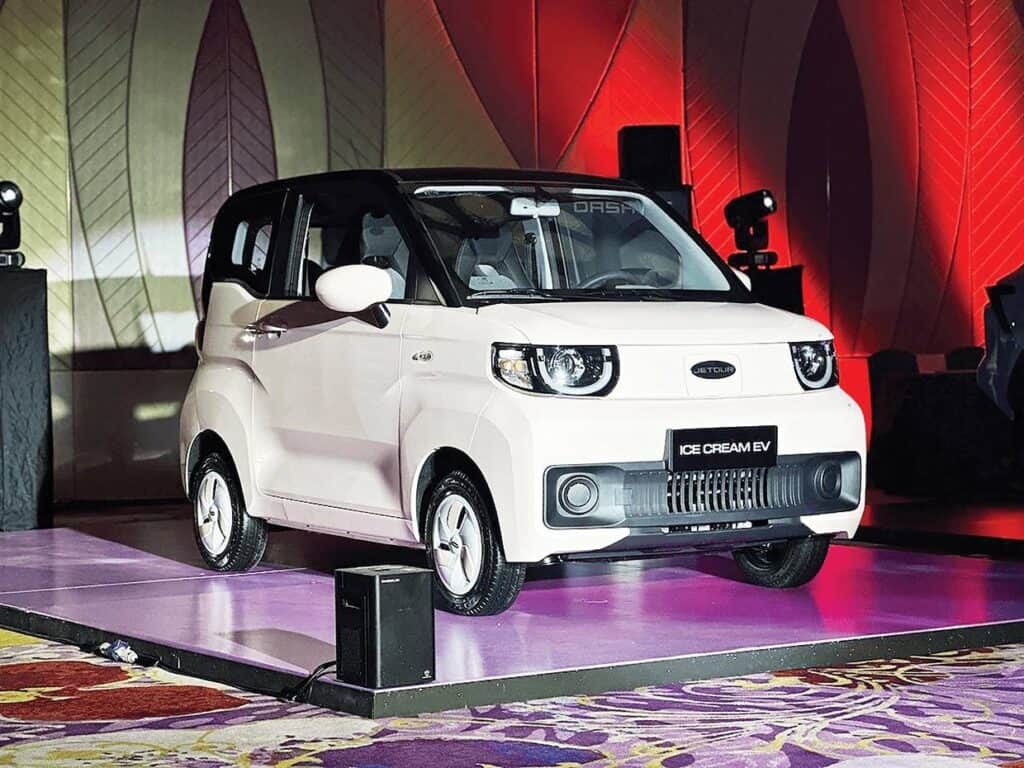We’re well into almost a year since the Electric Vehicle Industry Development Act (EVIDA) was passed. For those in the know and have been waiting for the arrival of more hybrid and EVs in the country, it was a significant step towards the completion of that goal.
True enough, after the act was passed into law, more and more electrified products have entered the market, which should be a win for discerning consumers.
In fact, there are now several electrified cars in the market, classified as hybrids, plug-in hybrids, mild hybrids, and pure electric. Hybrids and mild hybrids don’t require charging stations, while plug-in hybrids give you an option between letting the internal combustion engine (ICE) do the charging or plugging in. Pure electric vehicles, of course, require charging and have no internal combustion engine.
Mild Hybrid Electric Vehicles (MHEV)
Mild hybrid vehicles are also on offer locally. These electrified vehicles only mildly use an electric motor to boost performance and efficiency. Geely Philippines has the Azkarra and Okavango as its mild-hybrid offering, while Mazda Philippines has the Mazda3 and CX-30 M Hybrid models. The all-new CX-60 has also arrived, which comes with the automaker’s 48-volt M Hybrid Boost technology.
Meanwhile, Chery Philippines has also previewed the Tiggo 7 Pro Hybrid and the Tiggo 5X Pro Hybrid – both powered by a 1.5-liter gasoline partnered with a 48V Belt Starter Generator.
Suzuki Philippines, on the other hand, was the first to offer the most affordable mild hybrid MPV in the form of the Suzuki Ertiga.
Volvo Philippines has the XC90, XC60, and S90 on its stable – all powered by the revamped B6 engine, introducing the 48V hybrid system that has the Integrated Starter Generator (ISG) within. The technology is the same as the new BMW X7’s, which arrived last March.
Hybrid Electric Vehicles (HEV)
Whether parallel or series hybrid, there are vehicles in the country that are equipped with electric motors that aren’t just for boosting. Some hybrids can run a short distance propelled by just an electric motor. Despite that, they still don’t need charging.

Toyota Motor Philippines has been leading the way when it comes to its hybrid offerings, which include its premium brand, Lexus. Current hybrid models available locally are the Toyota Prius, Corolla Altis HEV, Corolla Cross HEV, RAV4 HEV, and Camry HEV, as well as the Lexus IS 300h, ES 300h, LS 500h, NX 350h, and RX 450h.
Toyota’s latest hybrid offering is the Zenix, the current range-topping gasoline variant of the new-generation Innova.

Great Wall Motor hosted its re-entry into the Philippine market with two electrified models in its three-model lineup. The Haval H6 and Jolion crossovers both have HEV variants at the top of their respective ranges.
Premium automaker Maserati is also selling the Ghibli and Levante hybrid models. The Grecale, which sits below the Levante in the lineup, has also been launched recently to join the list of local hybrid vehicle offerings.
As for Nissan, you might hear from some people that the Kicks is an EV, but with the presence of an internal combustion engine, it is a hybrid. It’s exclusively propelled by an electric motor powered by a battery, which is charged by an engine that runs on gasoline.
Plug-in Hybrid Electric Vehicles (PHEV)
There are a few plug-in hybrid electric vehicles as well. These vehicles don’t actually require charging but they can if you want to. This results in the ability to drive for short distance using battery power only
There’s the Mitsubishi Outlander PHEV, which was the first in the world to offer the type. Mitsubishi Motors Philippines recently previewed the all-new Outlander PHEV this June, which means its arrival is imminent.
Meanwhile, Chery PH introduced the Tiggo 8 Pro PHEV at the 2022 Manila International Auto Show. Ferrari, of course, has the SF90 Stradale and Spider, reserved for the one-percenters but still falls under the plug-in hybrid category.
Electric Vehicles (EV)
Then, there are the few brave EV offerings in the local market. BYD, or Build Your Dreams, has an electrified lineup that includes the Tang SUV (also available as a hybrid), Dolphin hatchback, Han sports sedan, and T3 van. Chery has the Arrizo 5e electric sedan available via indent order, while Changan has the Eado EV460.
Nissan is one of the first automakers to bring an EV into the market. However, it was only in 2021 when the car brand officially launched and priced the LEAF at P2.798 million. Weltmeister or WM has also launched locally in July 2022, aiming to storm the market with its pure EV lineup.

Jetour Auto also entered the fray by including the Chery QQ-based Ice Cream EV in its initial lineup. The P699,000 Ice Cream EV now stands as the most affordable EV that has been officially launched in the Philippines.
Hyundai has officially launched the award-winning Ioniq 5 in the country. This full electric vehicle rides on the e-GMP platform, which it shared with the Kia EV6 – also available locally in Long Range GT Line trim (for now). Hyundai has also announced that the Ioniq 6 is available for reservation starting in the last week of June, while Kia has announced that it will be bringing in more EVs soon.
For the premium ones, the Jaguar I-Pace is available for P7.59 million. PGA Cars bolsters its electric lineup with the Porsche Taycan, along with the Audi e-Tron GT and e-Tron SUV. Another German marque joined the premium EV segment in 2022 in the form of the BMW iX and iX3 SAVs – both battery-powered and don’t veer away too much from their ICE counterparts in terms of design.
Lexus, meanwhile, pulls the trigger for Toyota Motor Philippines by bringing in the RZ 450e – its first full EV.
Charging infrastructure
Charging infrastructures in the Philippines is still not as widespread as in first-world countries. However, we have recently taken a major step forward, courtesy of Pilipinas Shell.
Charging stations in malls have increased their population, also offering exclusive parking slots for EV owners. I’ve also seen charging stations outside Metro Manila, particularly in La Union (courtesy of Shell) and in Baguio City in Camp John Hay, courtesy of Ayala.
Speaking of Pilipinas Shell, the company has opened the Shell Recharge Station – the company’s first EV charging station. Strategically located in Shell Mamplasan along South Luzon Expressway, the EV charging station is a 180-kilowatt DC (direct current) fast charger capable of servicing two vehicles simultaneously.
There is one caveat, though. Shell’s fast charger uses CCS2 connectors, usually seen in European car brands like Porsche, Audi, and Jaguar, among others. If you own a Nissan LEAF or a Mitsubishi Outlander PHEV, you won’t be able to top up your car’s battery via the Shell Recharge Station. The company, however, confirmed that the future Shell Recharge Stations in the country might have different types of connectors, with the aim to develop an inclusive charging network in the country. Somewhere between 3 and 10 Shell Recharge Stations will be opened this year in Luzon, the company confirmed.
And that’s the major hurdle among charging stations, not only in the Philippines but also globally. There isn’t a standard among car brands yet, with the current least number of DC charger connectors now at five, depending on the car brand. Unfortunately, these charger connectors are incompatible with each other.
Then there’s the question of pricing. The Shell Recharge Station asks for P65 per minute of charging. This isn’t as pricey as you’d initially suspect, as the average time to “fill up” an EV is 30 minutes (depending on the battery type and capacity). And rightfully so, as the transitionary state isn’t cheap, mind you. Of note, the cost to put up a DC charging station would be upward of a million pesos.
Meanwhile, the other DC charging stations are found in the Unioil station along EDSA near Guadalupe, and in Nissan dealerships that sell and service the LEAF. Both use the CHAdeMO type of connector. The charging stations found in SM Malls are the AC type, which means you’ll have to leave your car for hours for a full charge.
Overall, we and the rest of the world are still in a transition period when it comes to standardizing the charging connections – much like when phones had different types of chargers before but are now transitioning to the more standardized USB Type-C connectors (hello, Apple iPhone).
However, we can’t deny that the movement in charging infrastructures locally is a substantial one, especially considering that it came from one of the three major producers of fossil fuel.

